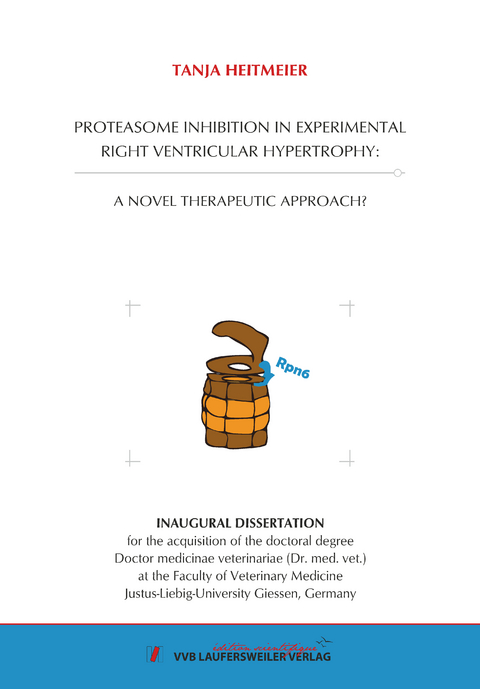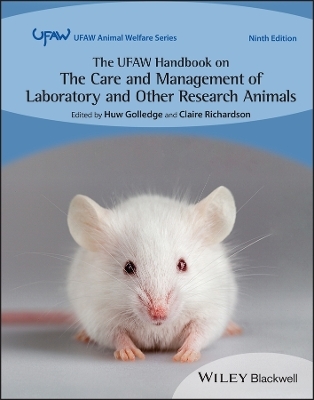
PROTEASOME INHIBITION IN EXPERIMENTAL RIGHT VENTRICULAR HYPERTROPHY:
A NOVEL THERAPEUTIC APPROACH?
Seiten
2017
VVB Laufersweiler Verlag
978-3-8359-6518-8 (ISBN)
VVB Laufersweiler Verlag
978-3-8359-6518-8 (ISBN)
- Keine Verlagsinformationen verfügbar
- Artikel merken
Right ventricular hypertrophy (RVH) due to pulmonary hypertension (PH) results during sus-tained disease progression in maladaptive cardiac remodelling. Not surprisingly, subsequent right heart failure (RHF) is the most common cause of death in patients with PH. Therefore, RVH represents an important prognostic factor and its alleviation is an aim of future therapies. The 26S proteasome is a large, ubiquitous protease that degrades over 80% of all cellular proteins. It has been shown to be activated in several cardiomyopathies and in rodent models of left ven-tricular hypertrophy (LVH). In the latter, partial proteasome inhibition suppressed the devel-opment of, and reversed established, LVH. These data suggest that upregulation of proteasome function is causally contributing to cardiac hypertrophy and can be used as a therapeutic target.
In this study, RVH was provoked in mice using pulmonary artery banding (PAB). Subsequently, the expression and activity of the proteasome was analysed in the tissue of hypertrophied right ventricles (RV) and compared to the one in RV of sham operated mice. Three weeks after PAB surgery, all mice had developed significant RVH as determined by echocardiographic, hemody-namic and histological analysis. The expression and the activity of the proteasome were upregu-lated in hypertrophied right hearts. Of note, enhanced formation of 26S proteasome was ob-served. This effect was accompanied by increased expression of regulatory subunit Rpn6, which has been previously shown to act as an essential component of 26S proteasome formation.
Moreover, two proteasome inhibitors were tested for their preventive and therapeutic applica-tion in experimental RVH. For three weeks, PAB mice received one of the two inhibitors Borte-zomib and ONX-0912 twice a week. The following echocardiography and histology showed that the preventive application of the proteasome inhibitors partially improved RVH. In the thera-peutic approach, the compounds were administered only when hypertrophy had already devel-oped. Subsequent echocardiography revealed that RV structure and function improved under treatment, with ONX acting more prominently than Bortezomib. In conclusion, proteasome inhi-bition may represent a therapeutic strategy for the treatment of RVH. Furthermore, the study provides an improved understanding on the pathomechanism of selective activation of the 26S proteasome by Rpn6 in RVH. Rpn6 may therefore represent a more specific therapeutic target to interfere with proteasome function in RVH than the use of proteasome inhibitors that target its catalytic subunits.
In this study, RVH was provoked in mice using pulmonary artery banding (PAB). Subsequently, the expression and activity of the proteasome was analysed in the tissue of hypertrophied right ventricles (RV) and compared to the one in RV of sham operated mice. Three weeks after PAB surgery, all mice had developed significant RVH as determined by echocardiographic, hemody-namic and histological analysis. The expression and the activity of the proteasome were upregu-lated in hypertrophied right hearts. Of note, enhanced formation of 26S proteasome was ob-served. This effect was accompanied by increased expression of regulatory subunit Rpn6, which has been previously shown to act as an essential component of 26S proteasome formation.
Moreover, two proteasome inhibitors were tested for their preventive and therapeutic applica-tion in experimental RVH. For three weeks, PAB mice received one of the two inhibitors Borte-zomib and ONX-0912 twice a week. The following echocardiography and histology showed that the preventive application of the proteasome inhibitors partially improved RVH. In the thera-peutic approach, the compounds were administered only when hypertrophy had already devel-oped. Subsequent echocardiography revealed that RV structure and function improved under treatment, with ONX acting more prominently than Bortezomib. In conclusion, proteasome inhi-bition may represent a therapeutic strategy for the treatment of RVH. Furthermore, the study provides an improved understanding on the pathomechanism of selective activation of the 26S proteasome by Rpn6 in RVH. Rpn6 may therefore represent a more specific therapeutic target to interfere with proteasome function in RVH than the use of proteasome inhibitors that target its catalytic subunits.
| Erscheinungsdatum | 23.01.2017 |
|---|---|
| Reihe/Serie | Edition Scientifique |
| Sprache | englisch |
| Maße | 146 x 210 mm |
| Gewicht | 145 g |
| Einbandart | Paperback |
| Themenwelt | Veterinärmedizin |
| Schlagworte | Doktorarbeit • Uni • Wissenschaft |
| ISBN-10 | 3-8359-6518-2 / 3835965182 |
| ISBN-13 | 978-3-8359-6518-8 / 9783835965188 |
| Zustand | Neuware |
| Haben Sie eine Frage zum Produkt? |
Mehr entdecken
aus dem Bereich
aus dem Bereich
Buch | Softcover (2024)
British Small Animal Veterinary Association (Verlag)
118,45 €
Buch | Hardcover (2022)
Wiley-Blackwell (Verlag)
342,40 €
A Practical Guide
Buch | Hardcover (2024)
Wiley-Blackwell (Verlag)
145,95 €


